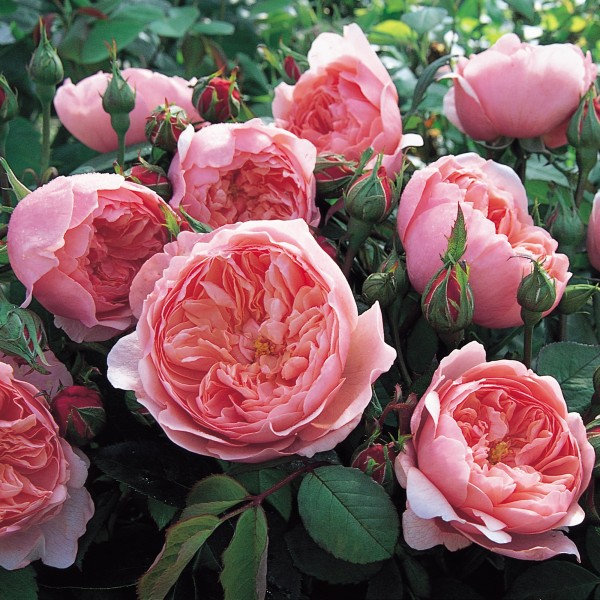
The roses are simply extraordinary in the UK at the moment, even in our tiny back garden at the shop (they will feature on Friday’s Post). For the other days this week here are some David Austin stars. Today The Alnwick Rose.
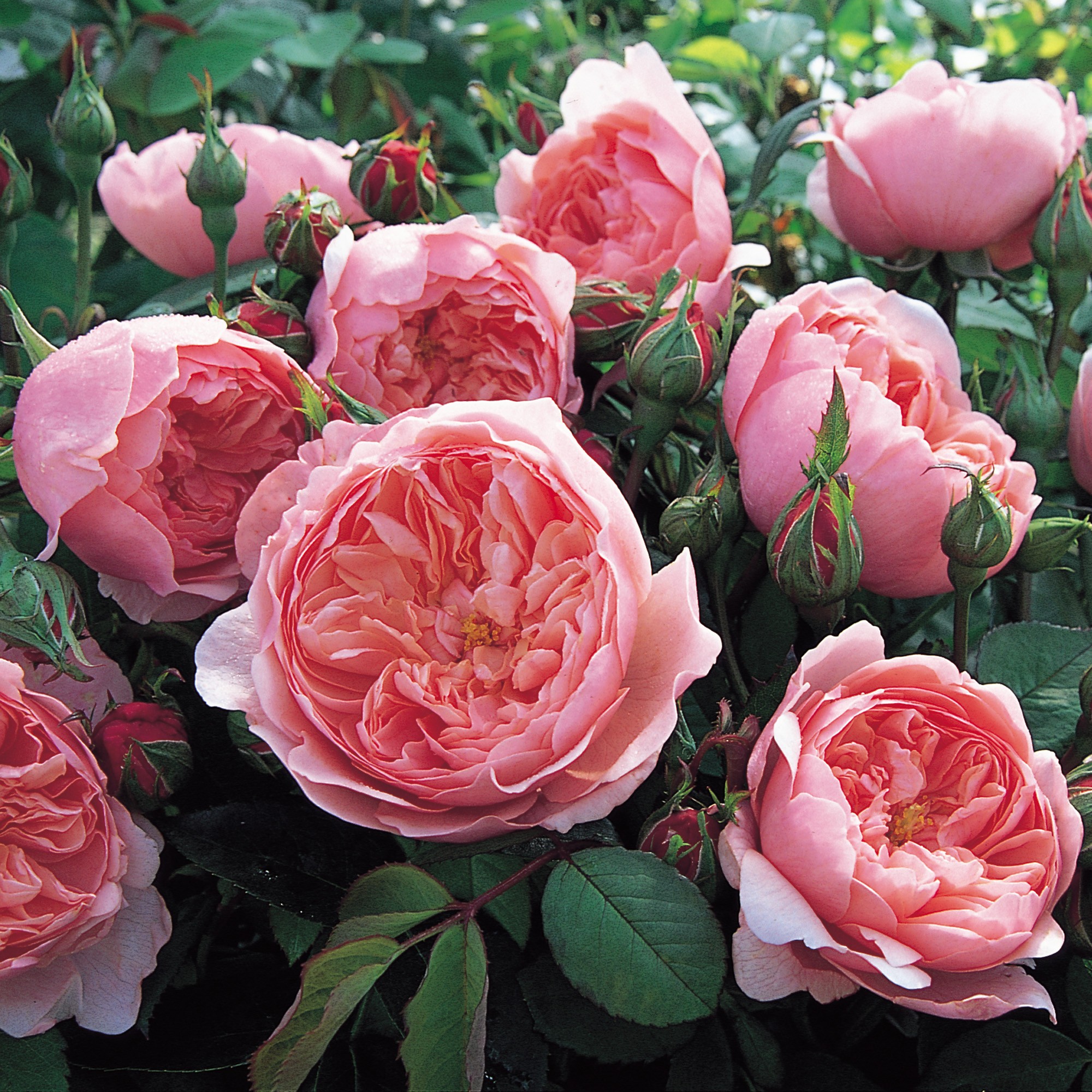

The roses are simply extraordinary in the UK at the moment, even in our tiny back garden at the shop (they will feature on Friday’s Post). For the other days this week here are some David Austin stars. Today The Alnwick Rose.
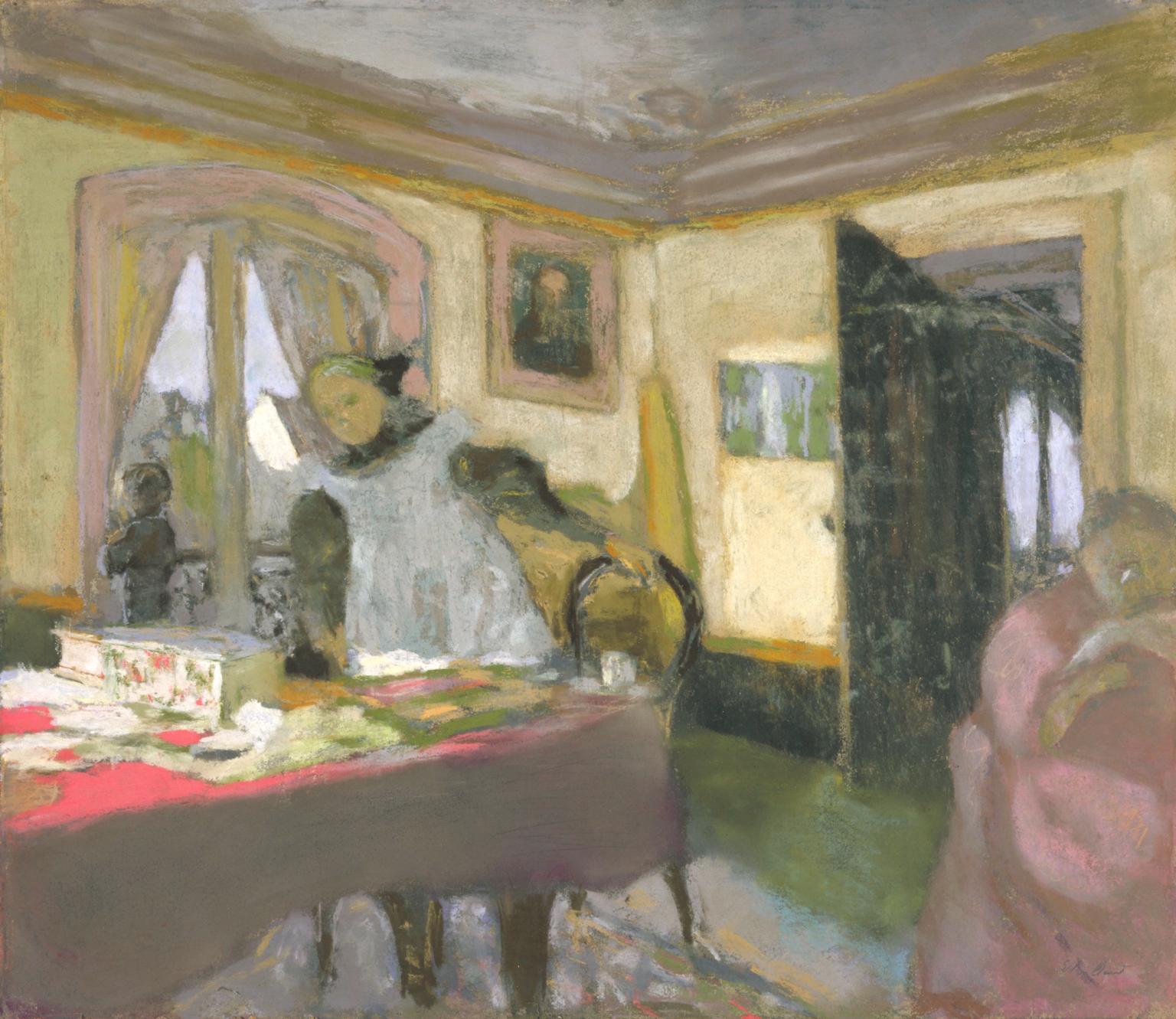
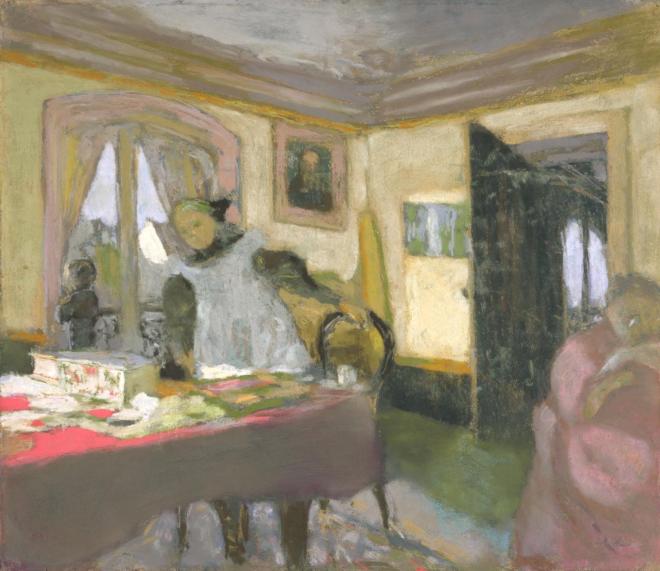
‘Vuillard has been overlooked because – for all his innovations, which influenced subsequent artists, including Matisse – he foregrounded feminine domesticity: a subject that male art historians have tended to ignore. “Vuillard engaged profoundly with aspects of his mother’s life – and, indeed, of women’s domestic life, in general,” Francesca Berry writes. “In the 1890s, that was unique.”’ Indeed: it was unique to choose to paint a subject like The Laden Table.
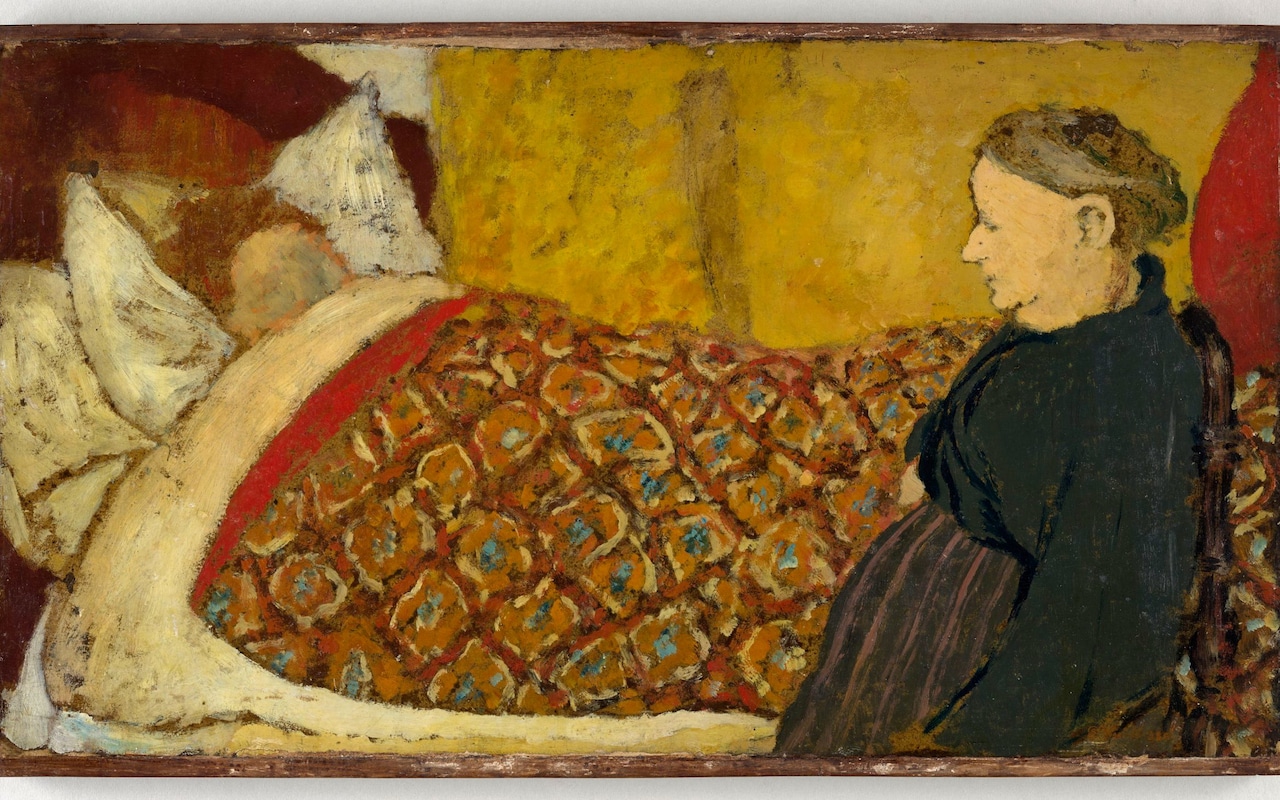
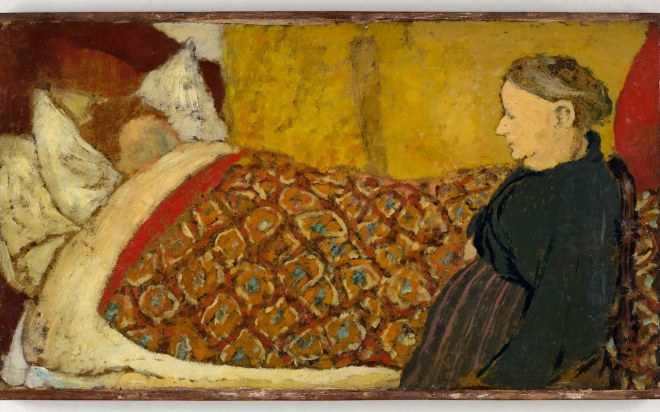
‘Early critics noticed the intimate, mysterious nature of Vuillard’s everyday domestic scenes, which have a subtly theatrical quality (he was a keen devotee of Ibsen and Strindberg, and designed theatrical costumes and scenery). As one writer put it in the 1890s, his pictures speak, as it were, “in a low tone, suitable to confidences”. Yet, for all their quiet modesty, and debt to traditional domestic interiors by Vermeer, Vuillard’s “intimiste” paintings (as they are known) have a surprisingly radical quality. In part, this is due to the way he manipulated paint: frequently, his brushwork appears crude and unresolved. He also painted on cheap, unconventional surfaces, such as cardboard. His subject matter was avant-garde, since, in an unexpected way, it dramatised modern life. Before Vuillard, few artists depicted bourgeois women performing housework – that was done by servants. Moreover, by painting his mother toiling in her dressmaking workshop, alongside the seamstresses she employed, Vuillard was shining a light upon something hitherto undocumented: the thousands of women in Paris’s garment industry who worked from home. The Lullaby (1894), which Vuillard kept until his death – after which it was acquired by Picasso – provides a good example: Madame Vuillard, seen in profile, watches over the artist’s sister, Marie, her body hidden beneath a vibrant diamond-patterned bedspread, her face a milky blur. At the time, Marie was pregnant, and the painting documents a serious illness that sadly resulted in a stillbirth.’
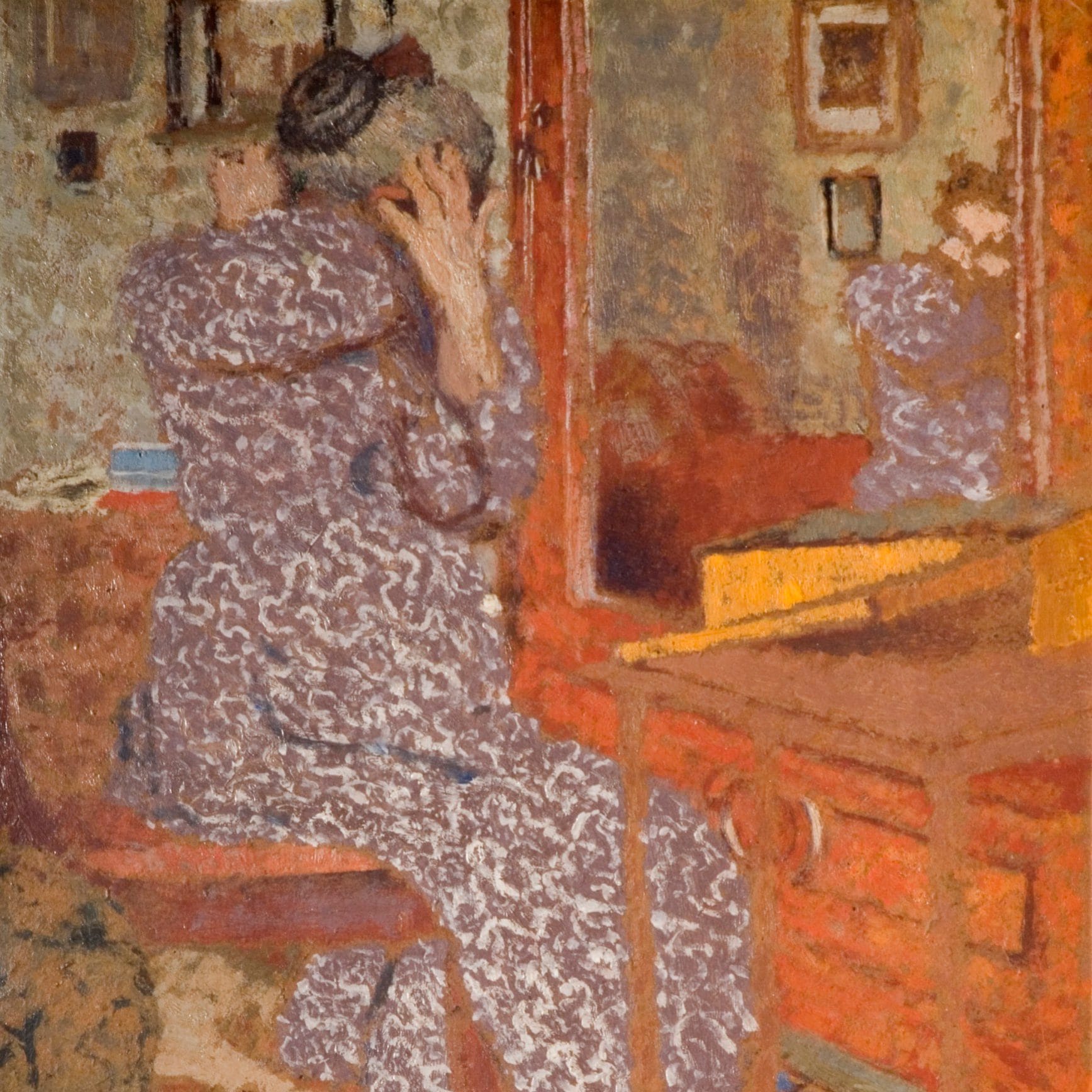
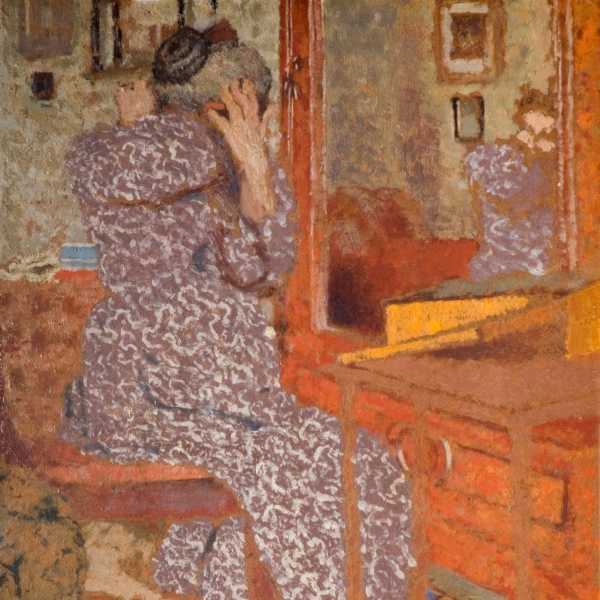
‘The snapshot effect here suggests that Vuillard based this painting on one of the numerous family photographs that he took with his Kodak camera. The artist’s mother ran a dressmaking business from their home and Vuillard’s style was influenced by the textiles that surrounded him… Early fans of the painter intuitively understood this relationship between his art and textiles: “He seems to embroider his canvases with glorious, old-fashioned wools,” wrote one Belgian critic, in a review of an exhibition held in Brussels in 1901, referring to Madame Vuillard Arranging Her Hair (1900)’ (Alastair Sooke in the Telegraph here.)
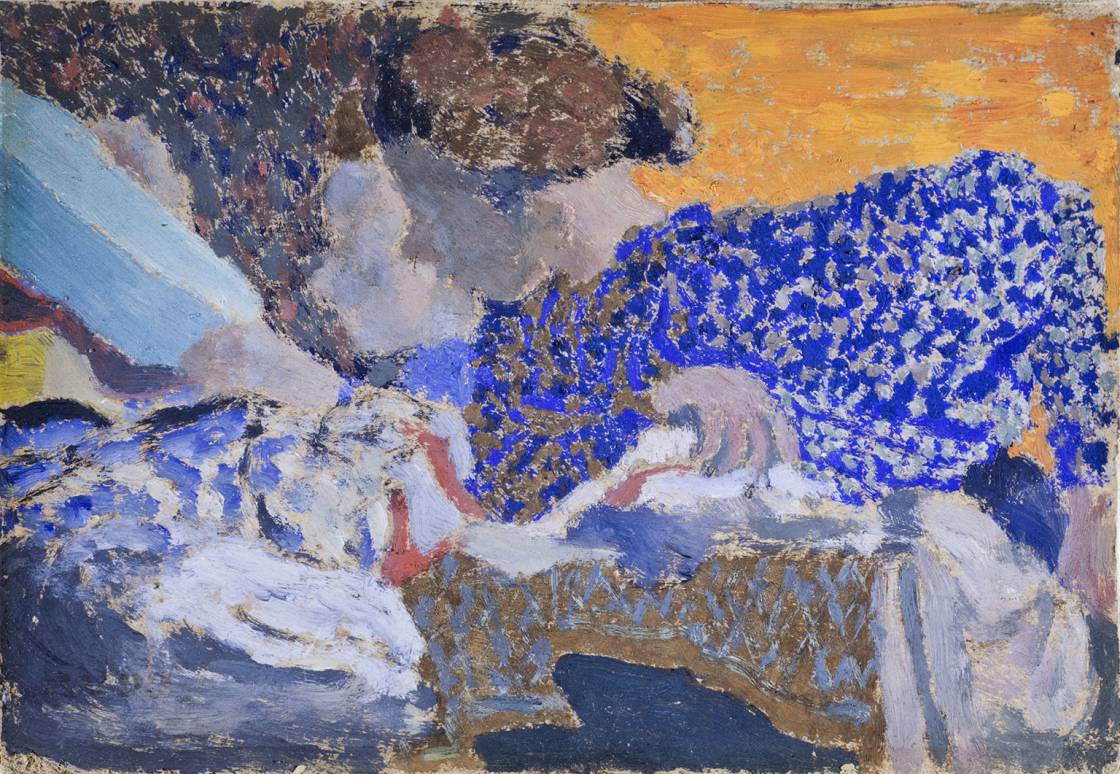
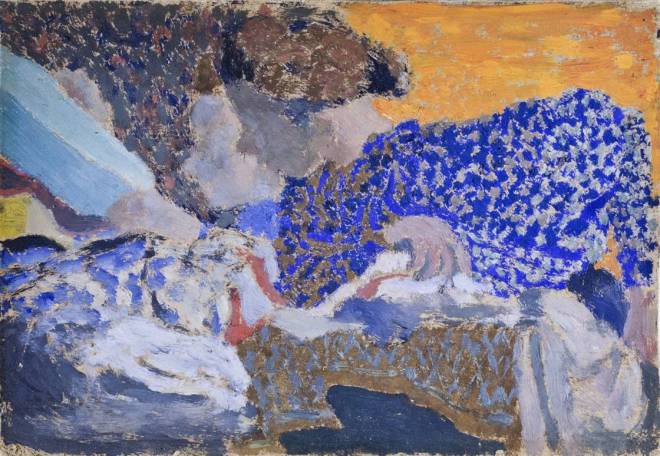
The Vuillard exhibition has opened at the Holburne in Bath. This is how the Telegraph began its review last week: ‘Edouard Vuillard rarely left the Paris apartment he shared with his elderly mother and at first sight his paintings appear inconsequential: a woman standing in blurred profile in a doorway, a man’s back silhouetted against patterned wallpaper – all rendered in rather blotchy oil paint.’ But they are not inconsequential, not at all, the paintings are extraordinary. This is Two Seamstresses in the Workroom 1893 normally at the National Gallery of Scotland.

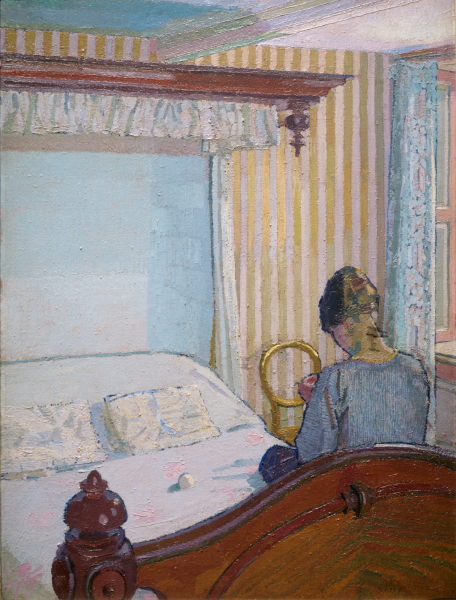
Interior 1917 by Harold Gilman is owned by the British Council – which means it is lent to British outposts abroad – well it would have been before the heartbreak that is Brexit. This was painted around the time that Gilman married for the second time. Alas, two years later he had died. (Next week more domestic interiors, by Vuillard; but not on Monday as it is a Bank Holiday in the UK.)
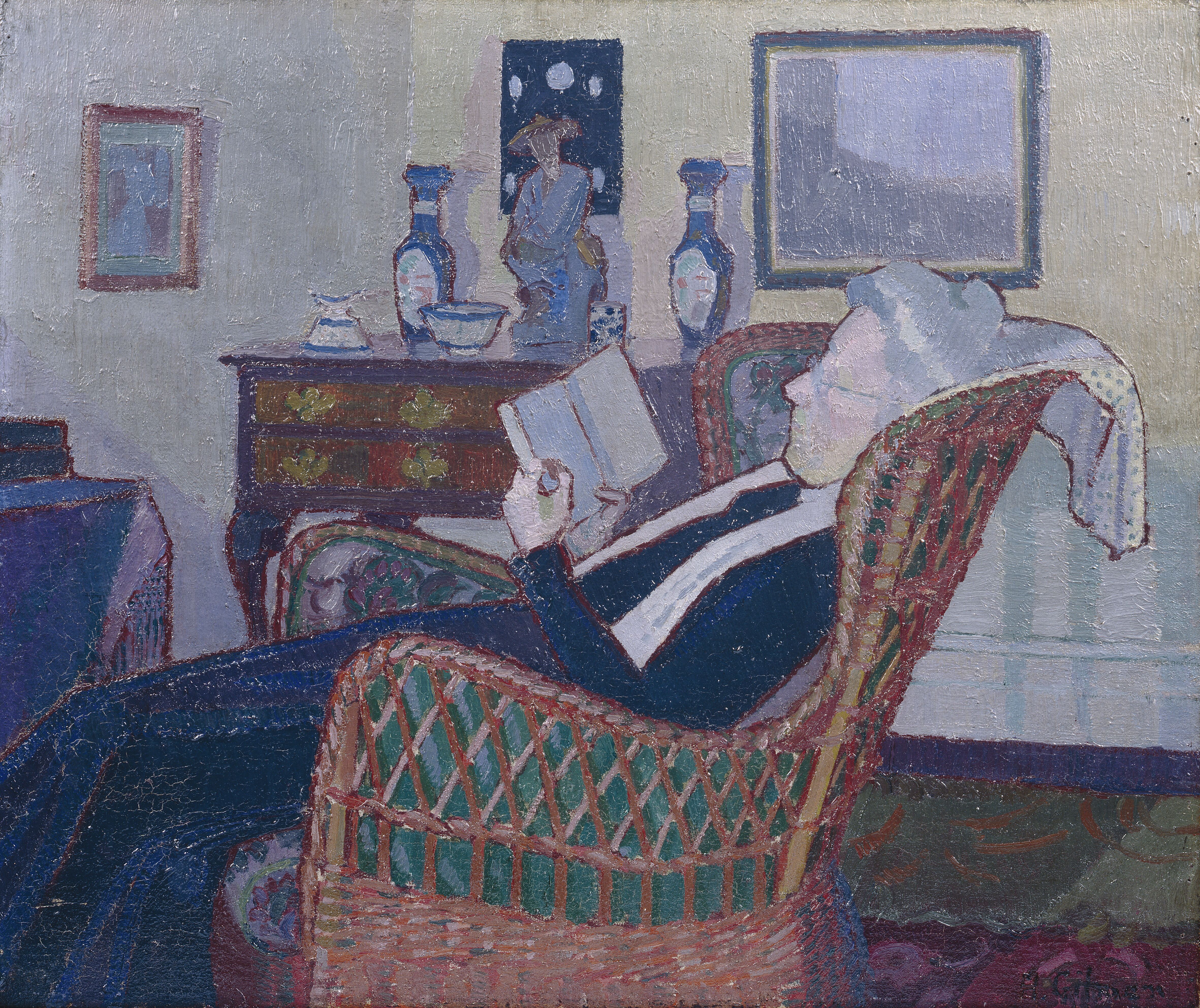
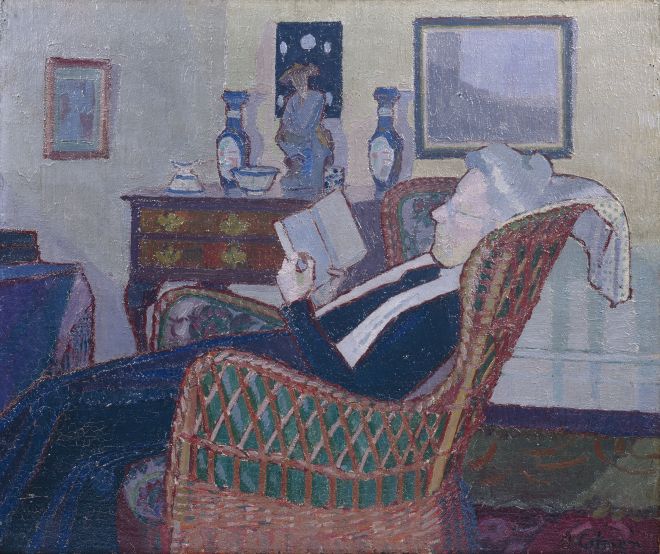
Interior with Artist’s Mother was painted just before Gilman’s death, in 1917-18. There is another painting of his mother reading here.
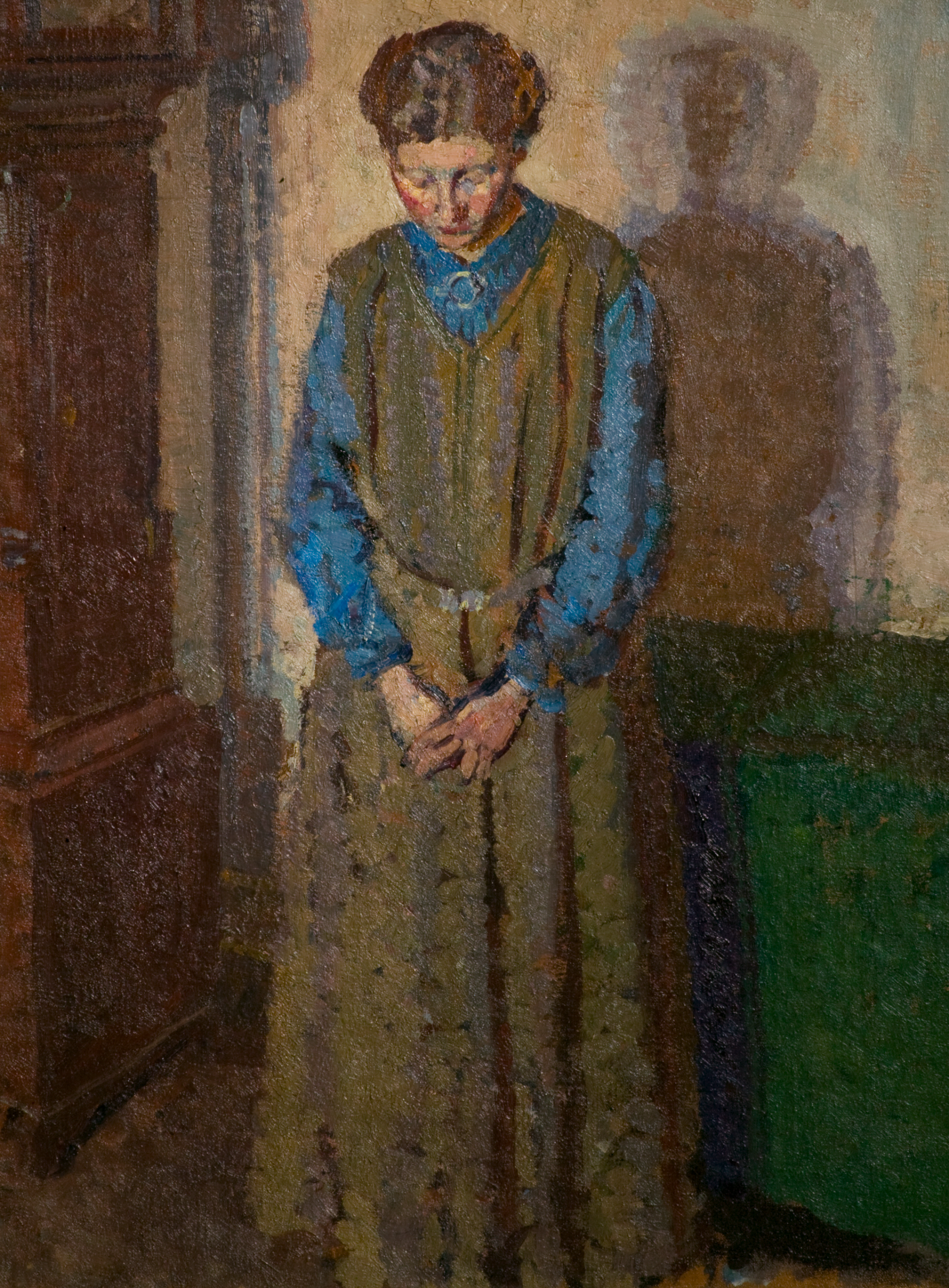
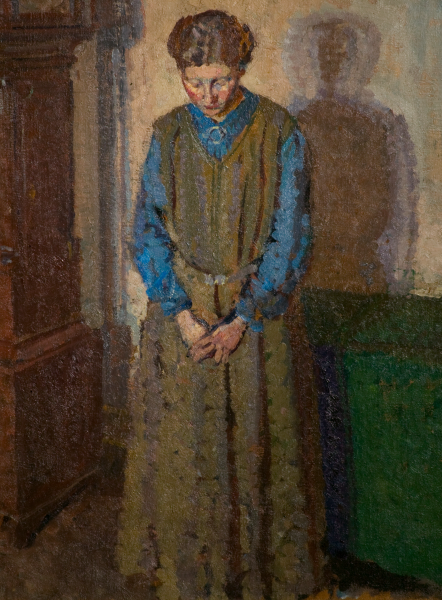
If Alas Poor Lady by Rachel Ferguson – which is about Victorian women who have nothing to do with their lives if they don’t manage to get married, so that Grace Scrimgeour in the book ends up in a lodging house – if it was ever a Persephone Classic (with a picture on the front) this would be the perfect cover. This is Meditation 1910-11, normally at Leicester. Do read the (always excellent) Persephone Forum about the book, here.
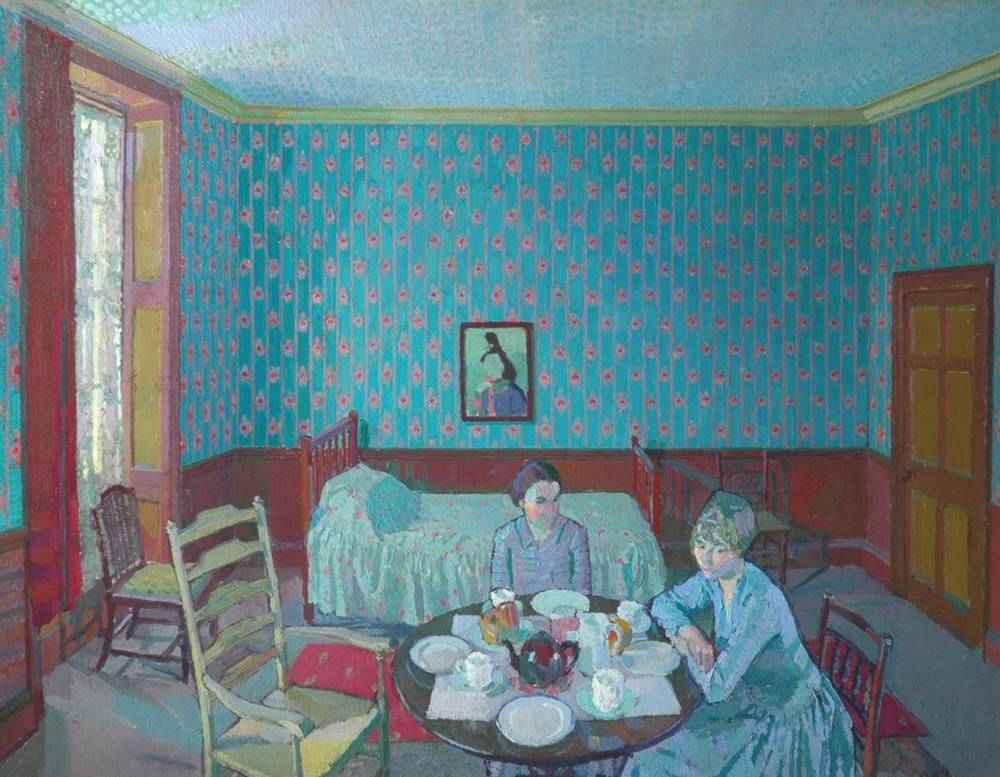
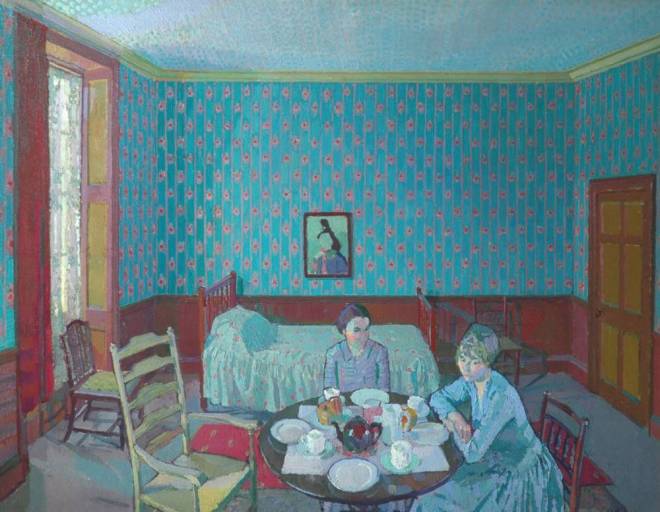
Tea in the Bedsitter is at Kirklees when not in Chichester. Gilman painted it in 1916. He would die three years later, aged 43, during the Spanish flu epidemic. Alastair Sooke wrote in the Telegraph that Gilman ‘ was one of the first cultural figures to depict that curious stratum of early 20th century British society and urban life: the shadowy, strangely isolating, perpetually shifting world of the boarding house and dingy bedsit, where disappointment, like dust, often hung thick in the air.’ (In fact, these two young women look pretty emancipated and as though they have gratefully escaped their families to come and live in ‘digs’.)
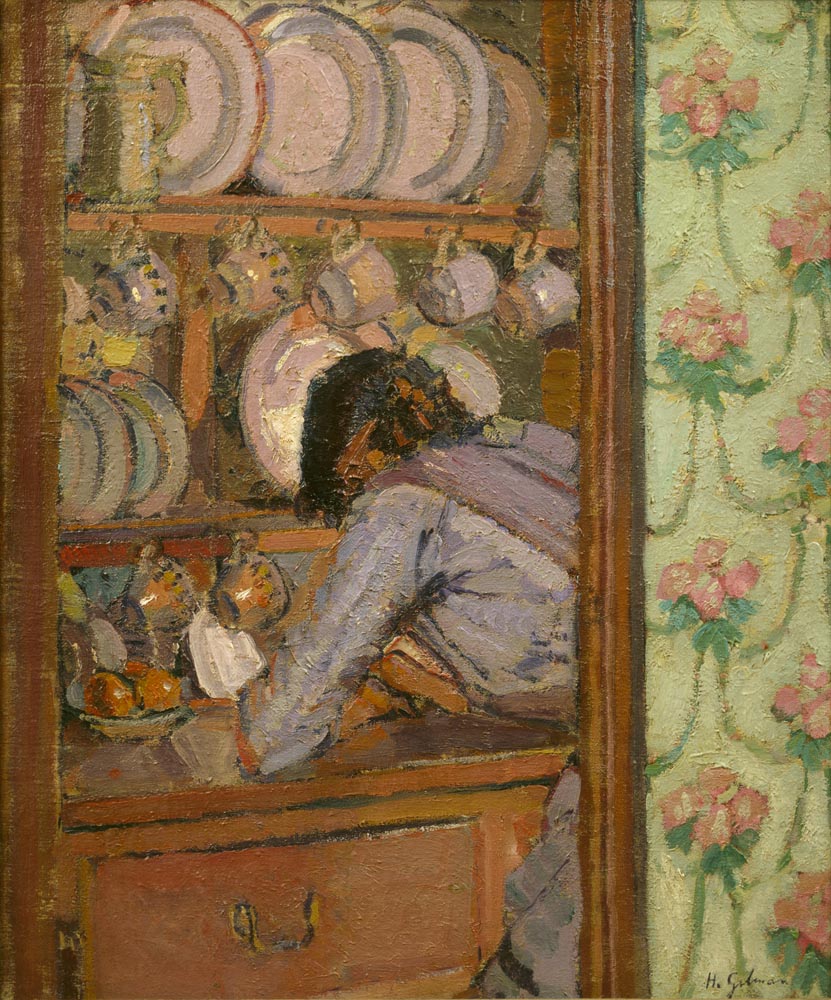
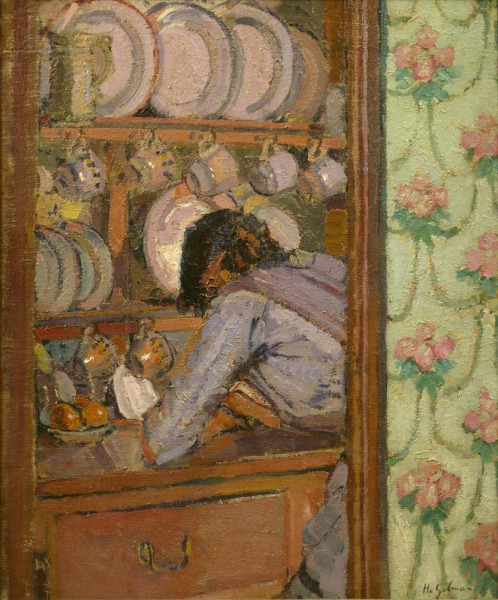
Harold Gilman: Beyond Camden Town is a new exhibition at the Pallant in Chichester: it runs until June 9th. ‘Harold Gilman (1876–1919) broke away from his contemporaries to produce a view of modern urban life in the early 20th century that was entirely distinct. He combined the gritty formality favoured by the Camden Town Group and his mentor Walter Sickert with the vitality of post-impressionism, with its thickly applied paint and vivid colours. Gilman’s subject matter and manner of painting were unusual bedfellows. His paintings infused scenes of everyday domestic life with a vigour clearly influenced by Vincent van Gogh and Edouard Vuillard [who will be the subject of the Post next week, because there is an exhibition just about to open at the Holburne in Bath]. His intimate depictions of domestic interiors captured a moment in time around the First World War when perceptions of gender, class and urban living were rapidly changing.’ ‘The Shopping List’ was painted in 1912.